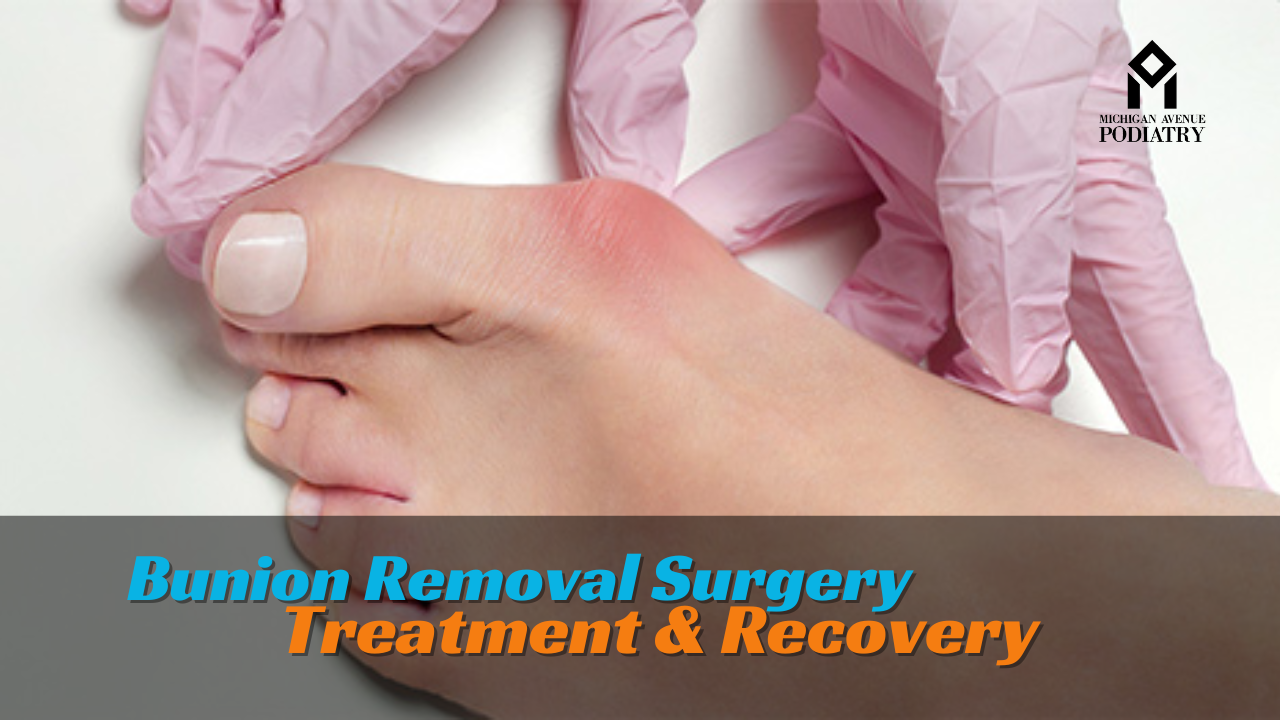Bunions are a common foot condition characterized by a bony bump that forms at the base of the big toe, often causing pain, discomfort, and difficulty wearing shoes. While non-surgical treatments such as orthotics and lifestyle modifications can help manage symptoms, severe or persistent cases may require bunion removal surgery. In this comprehensive guide, we’ll explore the ins and outs of bunion removal surgery, including the procedure itself, recovery process, and the role of a podiatrist in managing this condition.
Understanding Bunions and Bunion Removal Surgery
Before diving into the specifics of bunion removal surgery, let’s briefly review what causes bunions and when surgery becomes necessary.
Bunions develop when the bones in the foot shift out of alignment, causing the big toe to bend toward the other toes. This misalignment creates a protruding bump on the side of the foot, leading to pain, inflammation, and difficulty walking. While bunions can be exacerbated by factors such as genetics, wearing tight shoes, or certain foot deformities, the underlying cause is often a biomechanical imbalance in the foot.
Bunion removal surgery, also known as a bunionectomy, is typically recommended for individuals who experience severe pain, deformity, or functional limitations that are not relieved by conservative treatments. The goal of surgery is to realign the bones of the foot, remove the bony prominence, and restore normal function and alignment.
Types of Bunion Removal Surgery
There are several surgical techniques used to correct bunions, each tailored to the individual’s specific needs and the severity of the deformity. Some common types of bunion removal surgery include:
- Osteotomy: This procedure involves cutting and realigning the bones of the big toe joint to correct the deformity. The surgeon may remove a portion of the bony bump and may also use screws, plates, or wires to stabilize the bones during healing.
- Exostectomy: In cases where the bunion is small and not causing significant joint damage, an exostectomy may be performed to remove the bony prominence without realigning the bones.
- Arthrodesis: For severe bunions or cases involving arthritis in the big toe joint, arthrodesis may be recommended. This procedure involves fusing the bones of the big toe joint to create a stable, pain-free joint.
- Resection Arthroplasty: In this procedure, the damaged portion of the big toe joint is removed to relieve pain and improve joint function.
Recovery Process
Recovery from bunion removal surgery can vary depending on the type of procedure performed, as well as individual factors such as overall health and adherence to post-operative instructions. However, there are some general guidelines and milestones to keep in mind during the recovery process:
- Immediate Post-Op Period: After surgery, patients may experience some pain, swelling, and discomfort. Pain medication, elevation, and ice packs can help manage these symptoms.
- Weight-Bearing and Mobility: The surgeon may recommend limiting weight-bearing on the affected foot and using crutches or a walker for support during the initial recovery period. Gradually, as healing progresses, patients can begin to bear weight on the foot with the aid of a supportive shoe or walking boot.
- Physical Therapy: Physical therapy exercises may be prescribed to improve strength, flexibility, and range of motion in the foot and ankle. These exercises can help promote optimal healing and restore function to the affected joint.
- Follow-Up Appointments: Patients will need to attend follow-up appointments with their surgeon to monitor healing progress, remove sutures or dressings, and make any necessary adjustments to the treatment plan.
Role of a Podiatrist
Throughout the entire process, from initial diagnosis to post-operative care, a podiatrist plays a crucial role in managing bunions and ensuring successful outcomes for patients. Here’s how a podiatrist can help:
- Diagnosis and Treatment Planning: Podiatrists are trained to diagnose bunions and assess the severity of the deformity. They can recommend appropriate treatment options based on the individual’s unique needs and goals.
- Preventive Measures: Podiatrists can provide guidance on preventive measures to slow the progression of bunions and alleviate symptoms, such as wearing supportive footwear, using orthotic inserts, and practicing foot exercises.
- Surgical Expertise: For cases requiring bunion removal surgery, podiatrists are skilled in performing a variety of surgical techniques to address the underlying deformity and restore function to the foot.
- Post-Operative Care: Podiatrists play a critical role in overseeing the post-operative recovery process, monitoring healing progress, and addressing any complications that may arise.
Conclusion
Bunion removal surgery can offer relief for individuals suffering from pain, discomfort, and functional limitations caused by bunions. By understanding the surgical options available, as well as the recovery process and the role of a podiatrist in managing this condition, patients can make informed decisions about their treatment and take steps toward improving their foot health and overall quality of life. If you’re experiencing symptoms of bunions or considering bunion removal surgery, don’t hesitate to consult with a qualified podiatrist to explore your options and develop a personalized treatment plan.




